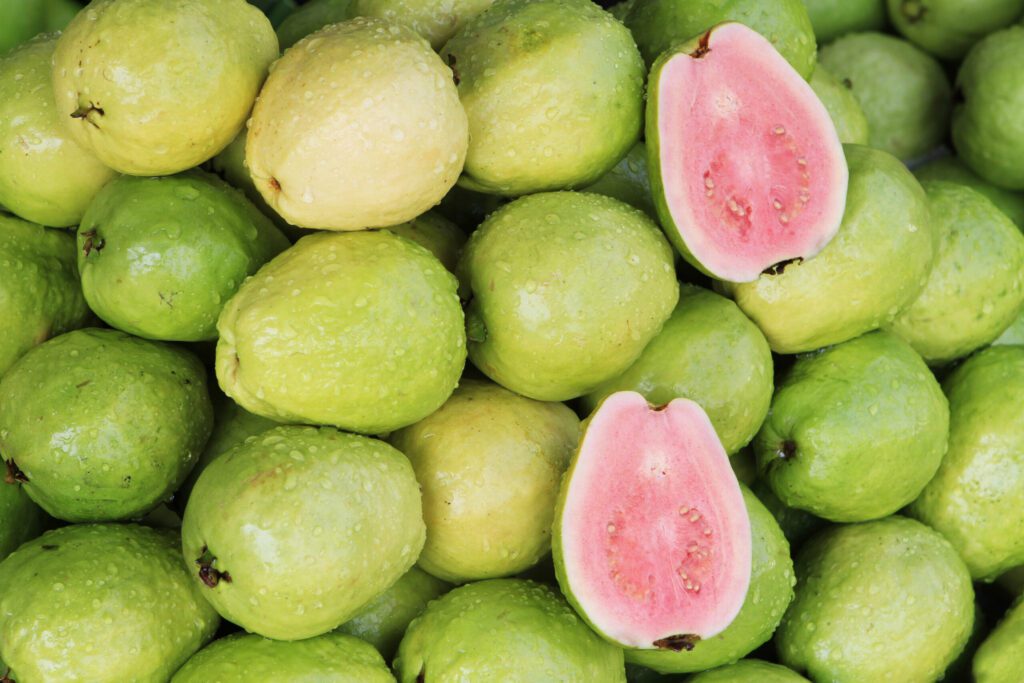Florida Taps Into the Tropics With Guava
by ERIKA ALDRICH
Sponsored by Farm Credit of Central Florida
Florida is great for an array of tropical fruit crops because of its tropical climate, and one of the most popular tropical fruits grown in Florida is guava. It’s a large fruit with a unique, sweet flavor that many describe as a cross between a strawberry and a pear. Guava is a popular ingredient in many Asian and Hispanic dishes. While it’s grown year-round in Florida, guava is in its peak season from July through September, with a smaller peak in February and March. You should be able to find guava in grocery stores, farmer’s markets, and roadside produce stands near you.
History of the Guava
Guava is found on just about every continent, but it’s thought to have originated in the Americas, specifically in southern Mexico through Central America, according to Purdue University. It’s found throughout the tropics, including Africa, India, the Philippines and the Caribbean, with India being the largest global producer. Because of this, it is known by many different names, such as guayaba, jambu biji, bayabas and Oi. In addition to being grown in Florida, guava sees production in Puerto Rico, Hawaii, California, Texas, Louisiana, Alabama and New Jersey.
There are many cultivars of guava, but most fall into one of two types: pink/red or white guava. According to UF/IFAS Extension, the pink varieties are most common in South Florida, and they are very popular in Latin markets. Similarly white “Thai” guava varieties are popular in Asian markets. Typically, pink guava varieties are eaten when ripe, and white guava are eaten when underripe, or “crispy” like an apple.
Guava Production in Florida
According to UF/IFAS Extension, guava was likely introduced to Florida by way of Cuba in 1847. Commercial production began in 1912, but it did not take off until the 1980s when acreage increased considerably. UF/IFAS Extension maintains that Florida had approximately 300 acres growing guava in 2000 and nearly 600 acres of guava in 2015.
Guava enjoys warm, tropical climates, so about 90 percent of all of Florida’s guava production occurs in South Florida in Miami-Dade County. While it is a tropical crop, guava is very hardy and will withstand a wide variance in soil quality, water salinity, and other factors. Because guava doesn’t do well in the cold, freezing temperatures can slow down or kill a guava tree.
Guava at the Table
There are many reasons to enjoy guava. According to the Florida Department of Agriculture and Consumer Services, guava has a host of benefits. It is high in Vitamin C and other vitamins. It is also high in fiber and rich in antioxidants which promote heart health.
Pink/red guava varieties should be allowed to warm to room temperature until the fruit’s peel changes color from light green to yellow, it has a bit of give when gently squeezed, and the fruit emits a strong fruity scent before eating. White guava is meant to be crisp like an apple, so it can be eaten when firm. Guava should be stored in a paper bag or a sealed plastic bag in the fridge to discourage ripening from contact with other fruit.
Both types of guava are eaten as fresh fruit or added to salads and desserts. Guava can also be used in a variety of recipes, including being cooked into pastries and pies, made into syrups, jams, jellies, and marmalades, and even canned as preserves. Fresh guava should be refrigerated and eaten within one to three days of being cut open.


